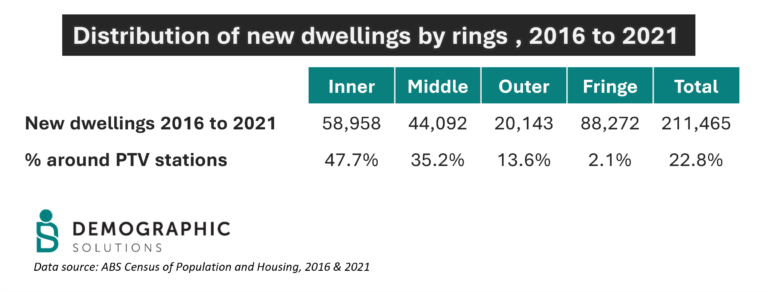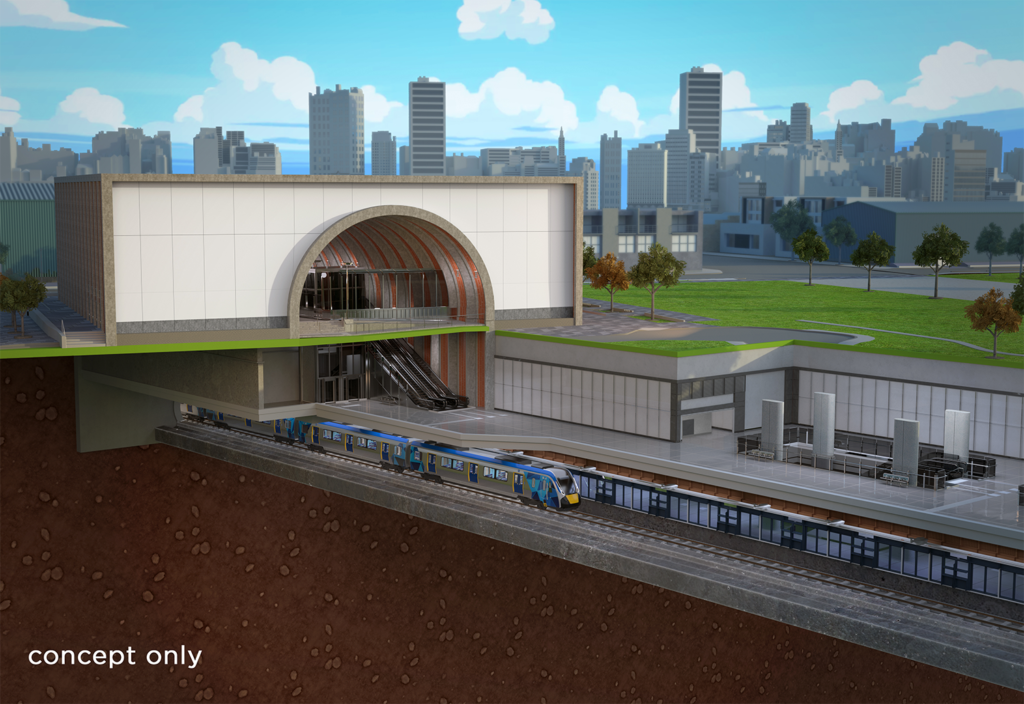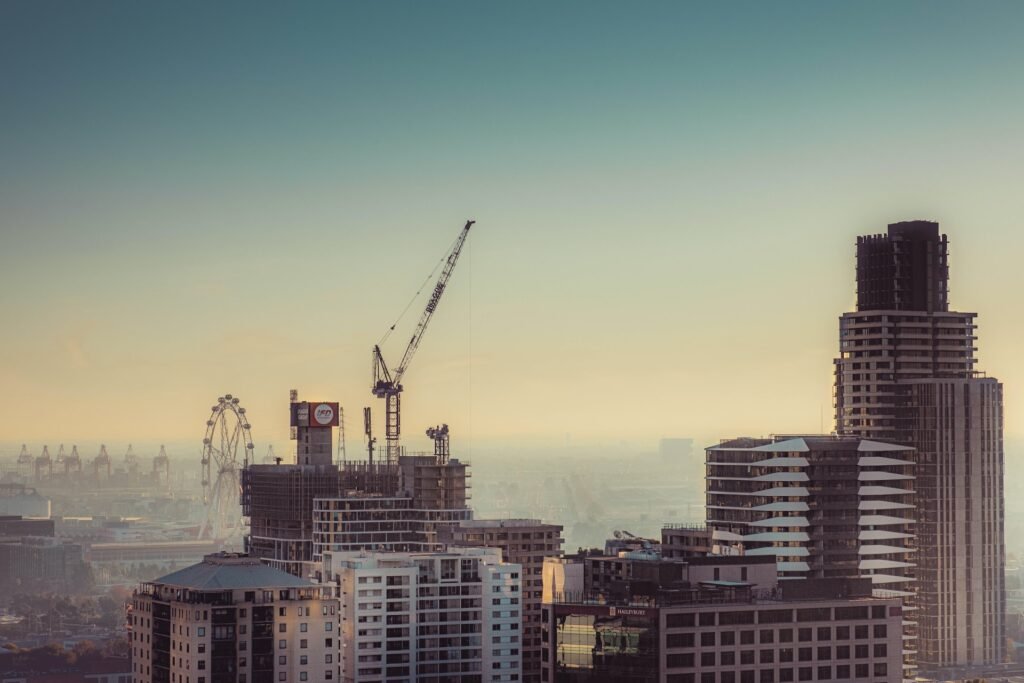Do you live or work near a PTV train station? Perhaps you drive to one to catch the train? By now, you have probably noticed the amount of residential construction that has taken place around these stations in the last several years – trust us, your eyes do not deceive!
Guided by activity centre policies (from both State and local Governments), it aims to focus new residential growth around existing transport nodes, specifically our metropolitan train stations. The idea and practice of encouraging focused higher density development around transit nodes has been around for a while. It brings about many advantages, such as greater walkability, better use of existing infrastructure, and promoting commerce, all the while creating “defensible spaces”. Along with a growing acceptance of the “apartments lifestyle” as a housing choice, the market has also responded by providing higher density forms of developments and alternative housing options for people to live in.
However, it also is contentious depending on where you live or your experiences. Residential Growth Zones and Mixed Used Zones “creeping” into Neighbourhood Residential Zones often raises concerns relating to local amenity. Some are concerned that the promotion of high-density living is unsustainable or driven by profit and not for people.
Nearly 23% of Melbourne's new dwellings occurred near a PTV Station between 2016 and 2021
Demographic Solutions has gathered data from the 2016 and
2021 ABS Census to find out where the ‘action’ has been occurring: generally, all
areas within a 10-minute walk of a railway station. This will provide some
insight into the balance of “new” additional dwellings between various stations,
along with a comparison of additional dwellings around stations in Melbourne’s
inner, middle, outer and fringe rings. From our initial analysis, we found that
stations with very little growth were mostly areas that had heritage and
neighbourhood characteristic planning protections.

The Inner Stations
As expected, the inner ring stations had the highest
concentration of new dwellings around PTV stations. Of the 58,958 dwelling
additions that occurred in the inner ring, 47.7% happened near a station. As
you would have probably guessed, the City Loop stations provided most of the
new dwellings in recent times, with most of the action being near Melbourne
Central and Southern Cross which combined to provide more than 14,000 new
dwellings between 2016 and 2021. Albeit at lower levels, Flagstaff gained just
over 2,200 new dwellings during this period while Flinders Street Station saw a
gain of around 650 dwellings.
New dwellings near CBD, inner-north and inner-west stations

One of the more interesting finds are the significant growth
around some of Melbourne’s “super stations” (stations with multiple lines) such
as South Yarra and Footscray within the inner ring where major projects have occurred
on former industrial areas, underutilised and surplus land. Despite being a non-junction
station, Moonee Ponds station saw substantial apartment development on former
car park areas, ranking it between South Yarra and Footscray in terms of
dwelling growth.

The Middle Stations
Melbourne’s middle ring had an increase of over 44,000 dwellings with 35% of these occurring near a PTV station. The eastern and south-eastern PTV stations saw major growth. Box Hill dominated with a gain of nearly 1,900 new dwellings which was more than most of its inner ring counterparts while Carnegie, Caulfield and Glen Waverley combining for over 2,700 new dwellings. These areas are attractive to new apartment construction due to both supply and demand factors. These areas have significant dwelling potential due to favourable planning regulations and the opportunity for changes in land use. These areas have significant appeal to people (especially young adults) as they are major activity centres, have excellent public transport links and in the case of Carnegie and Caulfield are close to a university campus.
New dwellings near eastern and south-eastern stations

Sources of new dwellings near middle ring stations were driven by a combination of land use changes (industrial to mixed use zones) and medium density infill developments on larger lots. There were also instances of lot consolidation to facilitate larger projects – a practice more common in Sydney. While the densities near middle ring stations may not reach the densities seen in the inner ring (due to height limits), there were some significant high-rise developments that did take place, such as SkyOne in Box Hill (more than 1,500 dwelling per ha).
Slow and steady growth around the outer ring stations
The Outer and Fringe Stations
Of the 20,143 new dwelling in the outer ring, 13.6% of its new dwellings occurred near a PTV station. St Albans and Ringwood stations are in suburbs that are slowly “urbanising” with an increase of medium density infill developments and more mixed use developments. One of Melbourne’s newest stations Williams Landing was purpose-built to accompany its new residential development.
It is widely known that the fringe areas of Melbourne saw significant residential growth between 2016 and 2021 largely thanks to the vast number of broadhectare development fronts. However, only 2.1% of new dwellings occurred near a station. Pakenham Station saw the most growth of all the fringe stations driven by the Ascot Estate (on the former Pakenham Racecourse).
On the contrary, some PTV stations experienced a decline in developments. Most of this was due to older dwelling stock that was demolished just prior to the 2021 Census. Most notable was the public housing tower near Newmarket and Clifton Hill stations.
What to expect looking ahead...
The addition of new PTV stations (Metro Tunnel Projects) would provide new opportunities for focused developments around stations. Of significance is the new Arden Station which is located within Arden-Macaulay urban renewal precinct in Melbourne’s inner west. It is expected that this former industrial land near the station will turnover for high density residential over time. The precedence for this area has been set as nearby industrial land has paved the way for some high density residential near Arden Street oval.
Read more about Arden Station here

Well underway: The new Arden Station expected to be completed by 2026. Source: Victoria’s Big Build
The new Parkville Station in the city’s health and education precinct has seen some high-density projects completed in the last decade. This is expected to continue as impetus for new dwelling opportunities has strengthened with the station’s completion by 2025. Sources of these opportunities are likely to occur in the northern part of Elizabeth Street on underutilised light industrial/warehouse and retail space.
Located on the southern edge of the Royal Botanical Gardens, the new Anzac Station should see some new dwellings in the future but the area is constrained by existing office/residential towers and the scarcity of low-rise buildings available for new projects.
In terms of existing PTV stations, we expect the share of new dwellings near middle and outer ring suburbs to increase over time. The availability of larger lots and the market/development viability (“financial tipping point”) of land around these stations will become more attractive going forward, particularly once development opportunities in near inner ring station dissipates.
So, has activity centre policy worked?
Land use planning around activity centres has played a major role in the significant increase of new dwellings around train stations, especially those with multiple train lines with greater connections to adjacent bus/tram routes. Coupled with the greater acceptance of apartment living whether it be for lifestyle, flexibility or simply “getting your foot in the door” of the housing market, we can expect more new dwellings around existing and future trains stations.

